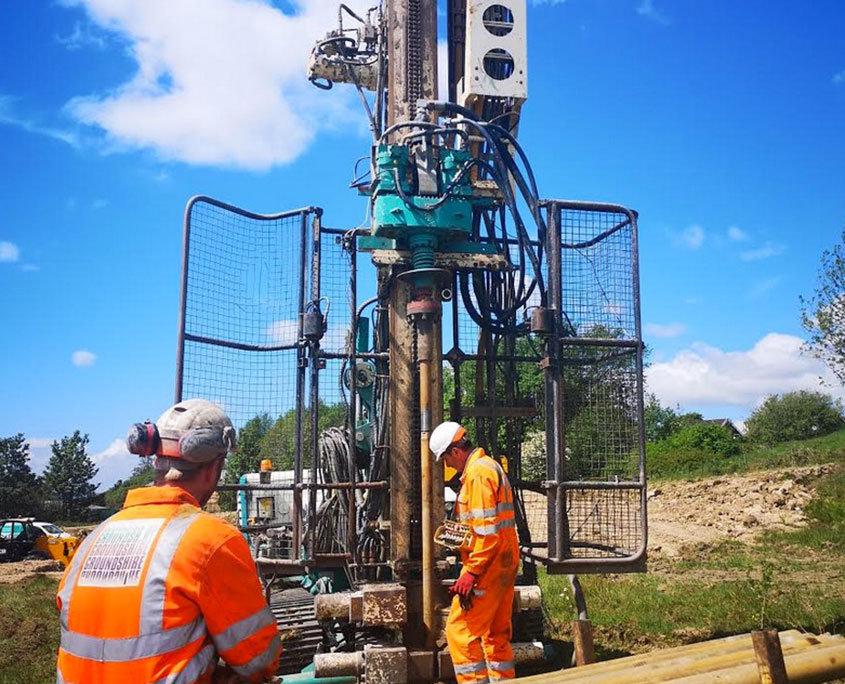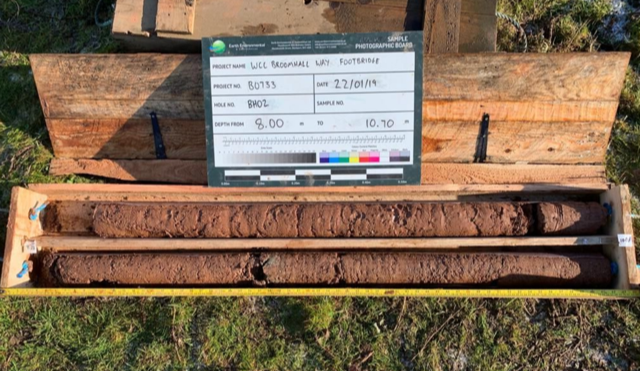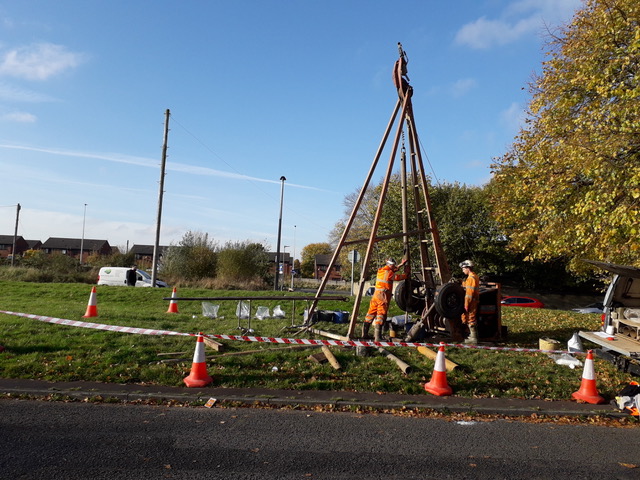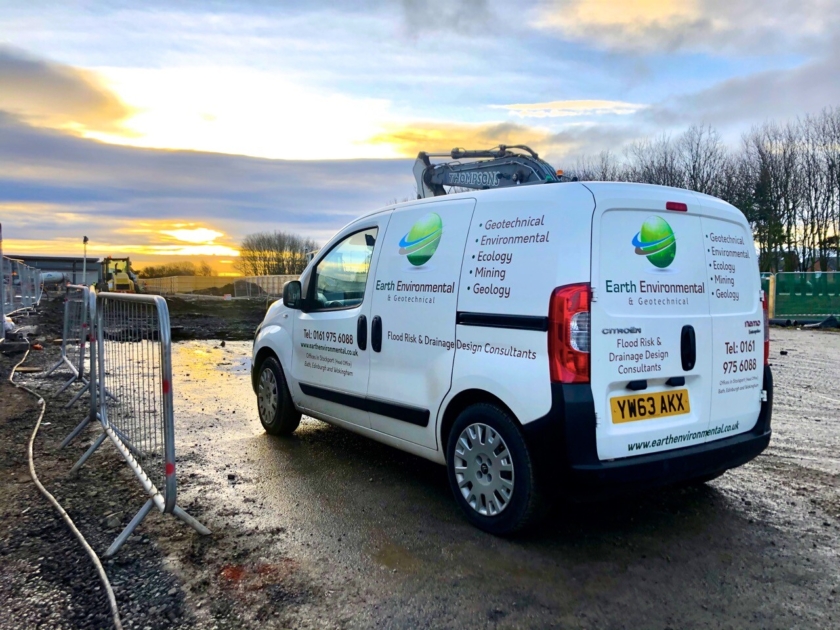Do I Need a Coal Mine Gas Risk Assessment?
For a Development Sites Planning Permission
How Do I determine if a Coal Mine Gas Risk Assessment is Required?
The overall risk assessment process for mine gas follows the broad framework provided by the UK government on land contamination risk management (LCRM1) (Environment Agency, 2020). The Coal Mining Reporting Area (also known as CON29M Coal and Brine Consultation Areas) is the known extent of coal mining activity and is used to determine whether a coal mining report is required for property transactions and the conveyancing process.
The coalfield is divided into two areas, referred to as Development High Risk Area and Development Low Risk Area:
• the High Risk Area (15% of the coalfield) is where coal mining risks are present at shallow depth which are likely to affect new development; and
• the Low Risk Area (85% of the coalfield) is where past coal mining activity has taken place at sufficient depth that it poses low risk to new development.
If your development site is within a Coal Mining Reporting Area (as defined by the Coal Authority, based on their current data and experience across Great Britain2) then a mine gas risk assessment should be carried out.
Why do you Need a Coal Mine Gas Risk Assessment?
Gas ingress to residential buildings from mine workings can occur and potentially pose risks to human health. In 2013 in Gorebridge, Scotland healthcare services were contacted with reports of headaches, dizziness, dry coughs and anxiety. In total 22 residents from a total of 165 living in the same development area of newly built homes complained of symptoms consistant with higher levels of carbon dioxide.The development site was situated in a former mining area with old mine workings and shafts in the area beneath the new development. Further investigations revealed that carbon dioxide was seeping into the new build properties and the residents were relocated and their homes demolished.
Another site in Northumberland residents reported similar illness and again further investigations revealed higher concentrations of carbon dioxide from gas egress. The Scottish Government commissioned a report to investigate such incidents. The report recommended that consolidated guidance was required for the industry on the investigation and assessment of mine gas risk. You can read more about this here
Potentially hazardous mine gases can, in some instances, enter buildings (or other enclosed spaces) where they may accumulate to present a risk. The main gases of concern from old coal mines include methane, carbon dioxide, carbon monoxide and oxygen deficient air. Other gases such as hydrogen sulfide and radon may also need to be considered in specific sites where there are known issues.
During the 1990s there was an average of about three new incidents per year, of which over 60% were attributed to leakages of gas through old, abandoned mine entries (this related to all gases). While methane ignitions (from various sources) have occurred in residential buildings (Wilson et al., 2009), thankfully there have been no fatalities in the UK.
None of the incidents were caused by carbon dioxide emissions from old deep mines through the ground above (except where shallow workings were connected to deeper ones). Many of the incidents relate to issues such as residents reporting headaches, breathlessness or an inability to light appliances (milder versions of symptoms seen in more severe carbon dioxide poisoning). Such reported effects are often the instigator of investigations and remedial works, although the report cautioned that based on the nature of carbon dioxide ingress/depleted oxygen events and their health effects, it is possible that some chronic events may have gone unrecorded.
What Should Property Developers Do to Understand the Risk of Subsidence from Mining?
At Earth Environmental & Geotechnical we offer a wide range of services to help property developers, residential owners and commercial developers understand the land that they are planning to develop or currently own.
The impact of historic mining activity or indeed current mining activity needs to be assessed before development designs and planning applications are submitted. If you are buying a property or land, your conveyancing solicitor may advice you to obtain a Mining Search in addition to the Local Authority Searches. Some lenders may refuse mortgages for properties near historic mining areas. So it is essential that, as a homebuyer, land buyer or property developer, you are aware of the risks posed by former mining activity to a property and what steps can be taken to mitigate the risks.
Types of Risk Assessments Available
At Earth Environmental & Geotechnical we provide a full range of Risk Assessments depending on the specifics of your development land.
The preliminary risk assessment would be a Phase 1 Desk Study – A Phase 1 Desk Study is an interpretive report for a development site, often required for planning application approval. The Phase 1 Desk Study would identify if further Mining Searches or Site Investigations are required.
Ideally, a Desk Study should also be accompanied by a walk over a survey conducted by an experienced practitioner. By compiling available information in relation to a site’s environmental, geological, hydrogeological, hydrological and mining setting a cost-effective and focussed site investigation will be developed. A Phase 1 Desk Study should always precede any ground investigation.
If your property or development site is in an area of coal mining activity then a Coal Mining Risk Assessment CMRA will be required. This can be completed in conjunction with the Phase 1 Desk Study.
Do I Need a Coal Mine Gas Risk Assessment?
If you are planning a new development or extending a property it is essential to have a thorough understanding of what you are building on.
If your development site is in a coal mining or mining risk area you need to ensure that steps have been taken to assess if complex mine gas risks are present.
If there is the potential of mine gas on your development site a mine gas risk assessment should be completed as part of the planning process. Gas ingress to residential buildings from mine workings can occur and potentially pose risks to human health. Indeed there are several well documented incidents where the gas egress resulted in health issues and action needed to be taken.
With over 150,000 abandoned mines across the UK and more than 130,00 properties within just 20 metres of a mineshaft, historic mining activity still impacts current developments, so having a detailed risk assessment could be essential for your site planning proposals.
Almost one-third of all residential properties in Wales and England are at risk of being affected by past mining activity. Reports estimate that 33% of homes are built within 250m of land that may have been used for coal mining and quarrying of sand, clay, and gravel pits.
Mine workings can extend for long distances underground and can even be found under residential and commercial properties. The UK has a long history of mining, and for over 4,000 years there has been mining activity. There may no longer be signs left in the area of previous mining activity, but below the surface may be hidden issues that could cause a significant impact on your property development.
What is the difference between a Coal Mining Risk Assessment and a Coal Mine Gas Risk Assessment?
- A Coal Mining Risk Assessment will identify site-specific coal mining risks and set out the proposed mitigation strategy to show that the site can be made safe and stable for the proposed development.
- A Coal Mine Gas Risk Assessment will identify if complex mine gas is a risk on your site and steps that need to be taken to minimise the risk.
What is a Coal Mining Risk Assessment?
The aim of a CMRA is to identify any coal mining legacy risks and set out a proposed mitigation strategy to demonstrate to the Local Planning Authority that the site can be made safe and stable for the proposed development. In some cases it may be possible to ensure that the development layout avoids recorded high risk features. https://www.gov.uk/guidance/planning-applications-coal-mining-risk-assessments
To find out more about Earth Environmental & Geotechnical’s Coal Mining Risk Assessments please click here
What is a Mining Search?
Mining searches assess the risk posed from historic mining activity. These shafts and tunnels could potentially cave in if not properly dealt with, causing subsidence and damage to the buildings above them.
So it’s important that a full risk assessment takes place to minimise the need for future financial investment, as well as to protect occupants. The latest technological advancements can also be utilised to assist in mining investigations and interpretation. For example, drones are commonly being used to investigate mine workings and property areas, providing added reassurance and evidence which can assist in making remediation decisions. Where significant mining features are identified, ground investigation is recommended to clarify any associated risks.







